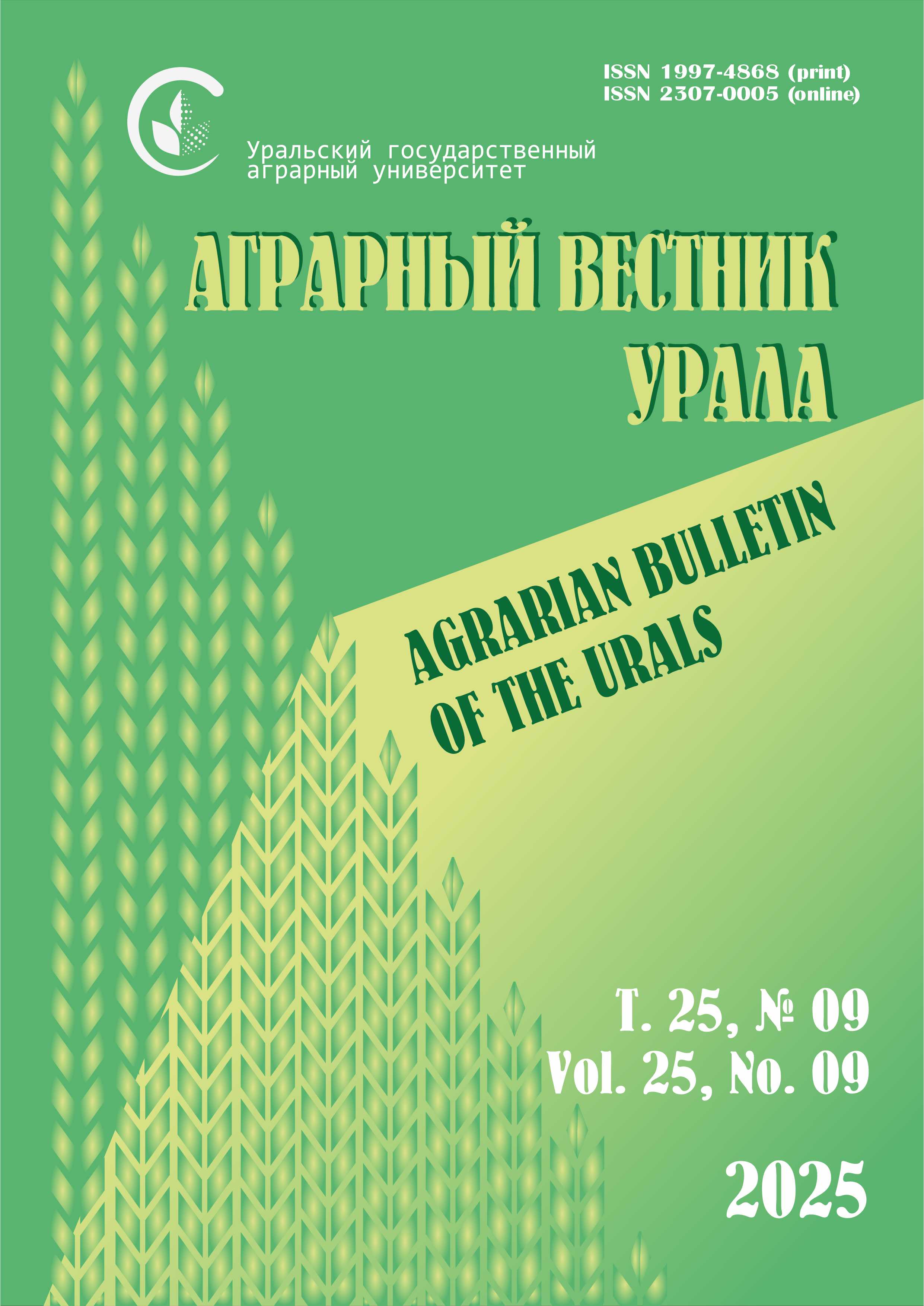A. S. Tronina1, S. L. Vorobyeva1 , V. M. Yudin1 , R. A. Ilyasov2 , O. P. Neverova3
1 Udmurt State Agrarian University, Izhevsk, Russia
2 Koltzov Institute of Developmental Biology of the Russian Academy of Sciences, Moscow, Russia
3 Ural State Agrarian University, Ekaterinburg, Russia
E-mail: This email address is being protected from spambots. You need JavaScript enabled to view it.
Volume 25 No. 5
Date of paper submission: 16.01.2025, date of review: 20.02.2025, date of acceptance: 28.02.2025.
Published: 05/31/2025
Abstract. The purpose of the research was to study the state of the gene pool of the Central Russian honey bee breed in the northern regions of the Udmurt Republic. Methods. A survey of beekeepers in the northern regions of the region was conducted, samples were taken, and morphometric and molecular genetic analysis of individuals of bee colonies was carried out. Scientific novelty. For the first time, a comprehensive assessment of the breed affiliation of bee colonies was carried out using morphometric and molecular genetic methods in the Udmurt Republic. Results. The studies showed that the analyzed bees generally correspond to the breed standards of the Central Russian breed in morphometric characteristics. The length of the proboscis corresponds to the standard and is 6.09–6.32 mm, with the exception of bees from the Balezinskiy district. In most of the studied areas, the cubital index corresponds to the standard and varies from 62.2 % to 65.7 %. It is widely accepted that bee colonies, according to the studied morphometric parameters, correspond to the standard of the Central Russian bee breed, while having individual features characteristic of breeds of southern origin. Based on this, DNA genotyping of the studied individuals was carried out, from which it was revealed that the genes of the evolutionary branch C (A. m. caucasica, A. m. carnica, A. m. carpatica) are found with different frequencies in the subspecies of the evolutionary branch M (A. m. mellifera), indicating a different level of hybridization of bee colonies within each northern region of the Udmurt Republic. At the same time, the largest number of M genes was found in the Kezskiy district (97.1 %), in the Debesskiy district (88.6 %) and in the Igrinskiy district (81.5 %), allowing for the preliminary formation of individuals from these districts into the “Udmurt” population of the Central Russian bee breed. Population genetic indicators of F-statistics confirm a small inbreeding in families of dark forest bees of line M of the Udmurt Republic, which is typical for pure lines.
Keywords: Central Russian bee breed, morphometric analysis, cubital index, molecular genetic analysis, gene pool, hybridization, locus, alleles
Acknowledgments. The research was carried out with the support of the Russian Science Foundation, project No. 24-26-00064, where an assessment of economically useful indicators and a morphometric assessment were carried out, as well as project No. 24-16-00179, which implemented a fragmentary analysis of the studied individuals.
For citation: Tronina A. S., Vorobyeva S. L., Yudin V. M., Ilyasov R. A., Neverova O. P. Morphometric and molecular genetic analysis of bee colonies in the northern regions of the Udmurt Republic. Agrarian Bulletin of the Urals. 2025; 25 (05): 779‒791. https://doi.org/10.32417/1997-4868-2025-25-05-779-791 (In Russ.)
Download the full text of the article












